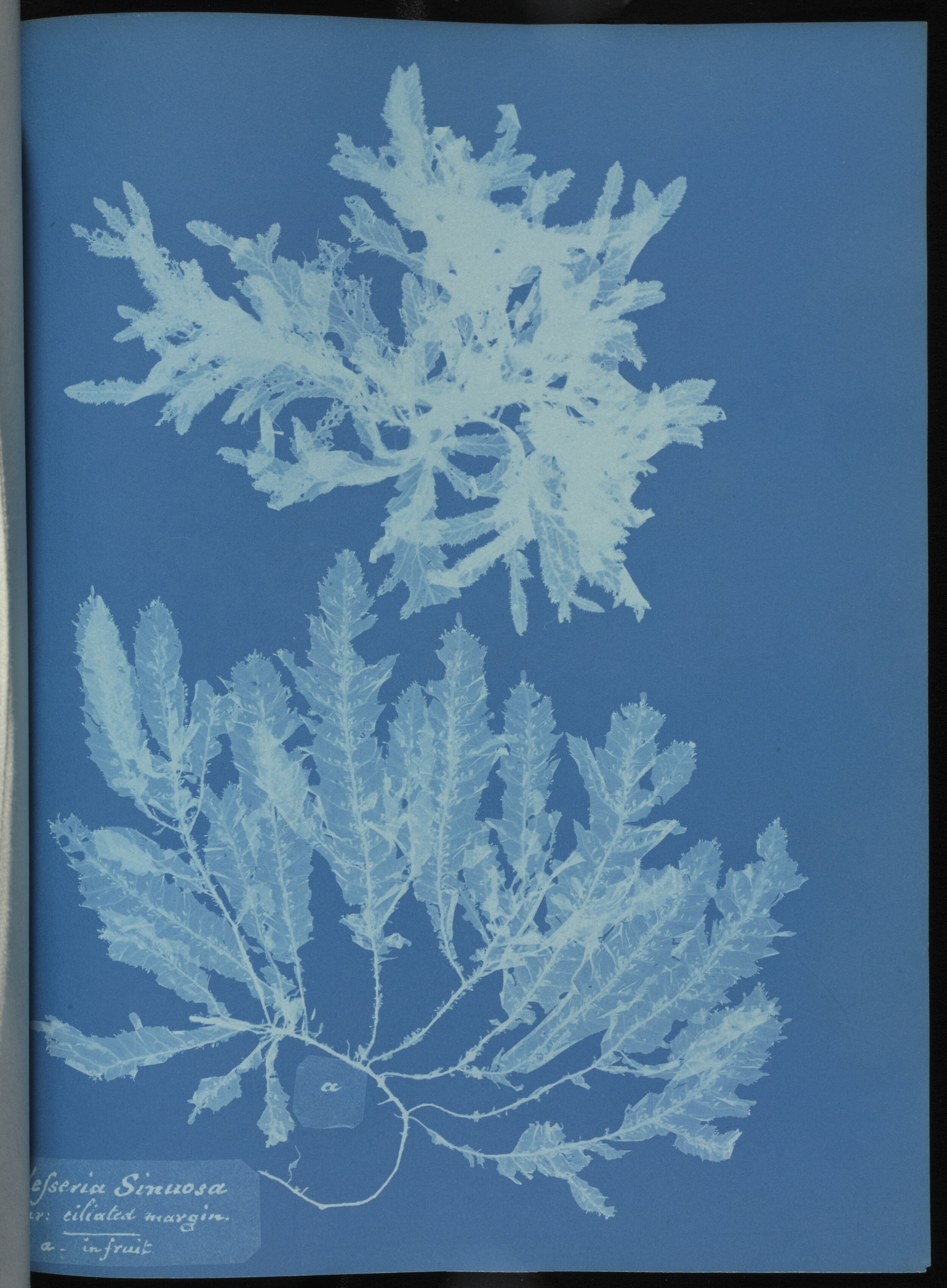Anna Atkins’ Photographs of British Algae: Cyanotype Impressions was published in 1843 – the first book to be illustrated with photographs
Images courtesy of the Trustees of the Natural History Museum
For Ernest, the cyanotype is the perfect embodiment of art and science: a moment frozen in light and shadow, conjured by chemicals in that beautiful cyan blue. While it was Sir John Herschel who developed the cyanotype method, an acquaintance of his, Anna Atkins, put the technique to innovative use – to create blueprints of her vast collection of botanical specimens. This she collated in her 1843 book, Photographs of British Algae: Cyanotype Impressions, the first book to be illustrated with photographs.
Anna was already an accomplished illustrator – a hobby considered suitably genteel for women of that period – but being the daughter of a respected scientist at the British Museum opened doors to her that would otherwise have remained shut, allowing her to mix in scientific circles and advance her study of British plants. Even by today’s standards her cyanotype impressions – the labels handwritten by Anna – are so detailed and intricate, you can distinguish one species from the next.





